From the sunken cypress forests of Congaree National Park to the intriguing Star Fort in Ninety Six National Historic Site, South Carolina National Parks promise equal parts nature retreats and fascinating history. Beautiful hikes, historic trails and well-preserved insights into 18th-century life greet you at every National Park site, and there’s no doubt you’ll finish your visit with a greater appreciation of American history.
South Carolina’s most well-known National park, and still widely unknown, is Congaree National Park. Here you can kayak down quaint river trails or stick to dry land and explore one of the many forest trails. Other National Park sites, including Fort Sumter and Fort Moultrie National Historical Park and the Reconstruction Era National Historical Park, showcase the state’s past struggles during the American Revolution and Civil War.
If you’re ready to walk in the footsteps of Loyalists, Patriots, Confederates and Union soldiers and take a glimpse into the early days of the United States’ independence, there’s no better place than South Carolina’s National Parks. Pack your bags and bring an open mind, and get ready to take a deep dive into the history of South Carolina. There’s truly no other state quite like it!
Contents
- South Carolina National Parks
- 1- Congaree National Park
- 2- Charles Pinckney National Historic Site
- 3- Cowpens National Battlefield
- 4- Fort Sumter and Fort Moultrie National Historical Park
- 5- Kings Mountain National Military Park
- 6- Ninety Six National Historic Site
- 7- Reconstruction Era National Historical Park
- 8- Overmountain Victory National Historic Trail
South Carolina National Parks
1- Congaree National Park
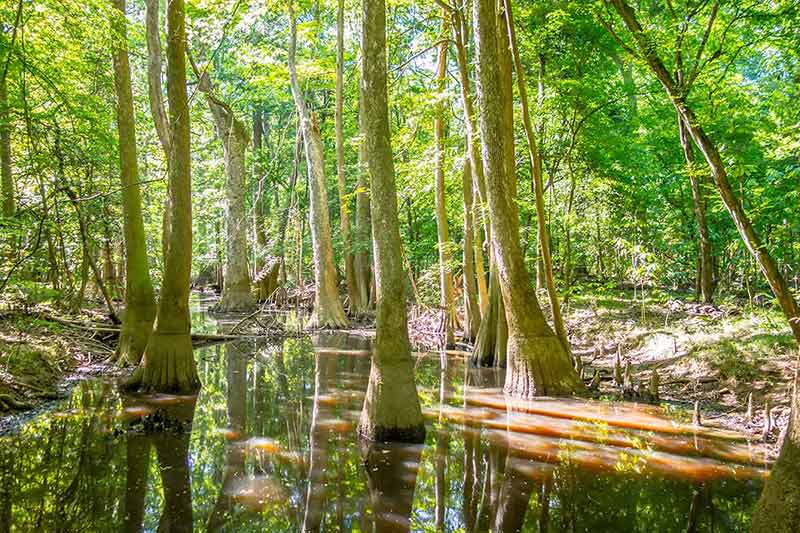
You are probably not alone if you haven’t heard of this hidden gem.
Congaree ranks as the 10th least visited National Parks in the United States, meaning your chances are high you’ll get to enjoy its magnificent hardwood forests and quiet river trails without another soul around.
While most visitors come to enjoy hiking, fishing, camping and kayaking along the Congaree and Wateree Rivers, the land has a long history of residents.
Native Americans were the first to settle the Congaree flood plains, followed by enslaved African Americans using the land as a refuge.
There’s little evidence of Congaree’s past left, but while floating down the gentle rivers, it’s easy to imagine the abundance of food and safety the land offered.
Things To Do In Congaree National Park
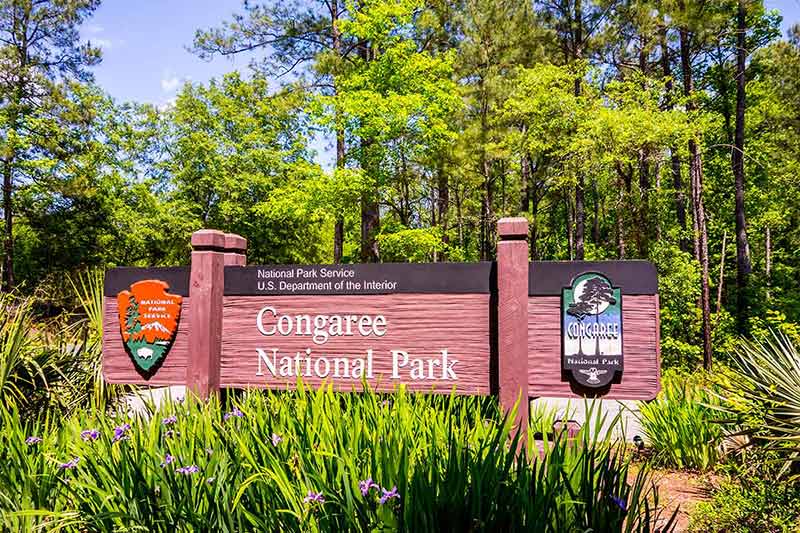
The best way to discover Congaree National Park is by canoe or kayak, but the park does not rent out water equipment, so you’ll need to bring your own or rent one from an outfitter in Columbia.
Then, drop your kayak or canoe in at Bannister’s Bridge, and you can travel 15 miles (24 kilometres) through the Congaree Wilderness to the Congaree River.
With no modern-day sounds around, bird songs take over, creating a soundtrack like no other.
If you prefer dry land, there are numerous beautiful hikes around Congaree National Park.
A must-do, if it’s your first time in the park, is the Boardwalk Loop Trail.
The trail starts at the Harry Hampton Visitor Center and winds 2.6 miles (4.2 kilometres) through tall hardwood trees and underwater cypress forests.
For something a bit more challenging and to spot deer and wild turkey, the 7.1 miles (11.4 kilometres) Oakridge Trail brings you along an oak tree-covered ridge and down into wildlife-filled low-lying marshes.
Remember, the entire Congaree National Park is prone to flooding, so always check in at the visitor centre to ensure your chosen trail is open.
How To Get To Congaree National Park
Located just 20 miles (32 kilometres) south of Columbia, the easiest way to get to Congaree National Park is to fly into Columbia Metropolitan Airport and then take SC-48 E down to the park.
It’s also possible to fly into Charleston International Airport; from here, it’s just under a two-hour drive northwest on I-26 W.
Congaree National Park is at 100 National Park Road, Hopkins, South Carolina 29061
Also read:
- 12 National Parks In North Carolina
- 21 North Carolina Landmarks
- 20 North Carolina Beaches
- 20 Things To Do In Cherokee
- 20 Things To Do In Fayetteville NC
- 20 Things To Do In Winston Salem
- 20 Things To Do In Charlotte NC
- 20 Day Trips From Charlotte
- 20 Things To Do In Raleigh NC
- 20 Things To Do In Atlantic Beach
- 20 Things To Do In Hickory NC
- 20 Things To Do In Concord
- 20 Things To Do In Cary
- 20 Things To Do In Beaufort
- 20 North Carolina State Parks
- 20 North Carolina Cities
- 20 Islands In North Carolina
- 20 Things To Do In Asheville
- 20 Things To Do In Oak Island
- 15 Things North Carolina Is Famous For
- 20 Things To Do In Duck
- 8 National Parks In South Carolina
- 20 South Carolina Landmarks
- 20 South Carolina Beaches
- 20 South Carolina Islands
- 20 South Carolina Cities
- 20 Things To Do In Florence SC
- 20 State Parks in South Carolina
- 20 Things To Do In Myrtle Beach
- 20 Things To Do In Charleston
- 20 Things To Do In Columbia SC
- 20 Things To Do In Spartanburg
- 20 Things To Do In Greenville
- 15 Things South Carolina If Famous For
2- Charles Pinckney National Historic Site
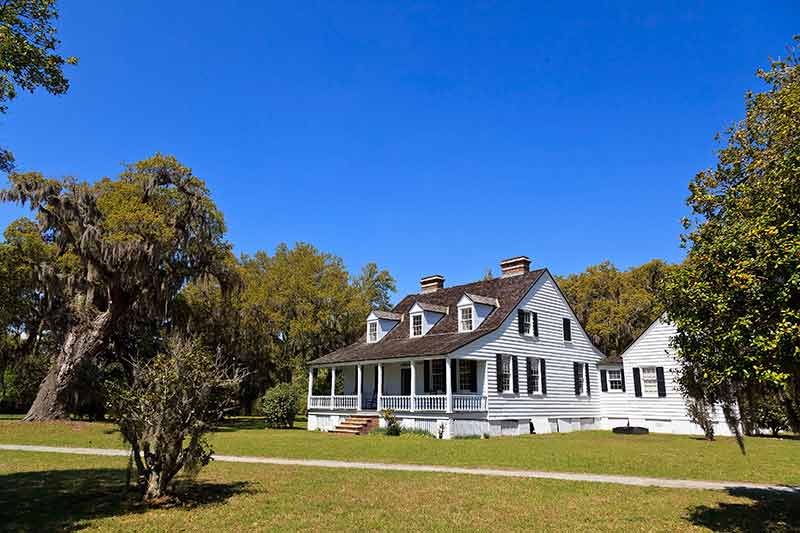
A visit to the Charles Pinckney National Historic Site is a must to get an in-depth view of life in the late 1800s and early 1900s.
Charles Pinckney himself was an author and signatory of the U.S. Constitution and had significant political influence leading up to the Civil War.
His plantation, Snee Farm, was home to dozens of enslaved African Americans, and numerous artefacts and relics can still be seen around the National Historic Site today.
Things To Do In Charles Pinckney National Historic Site
You won’t need much time to experience Charles Pinckney National Historic Site, as you can explore the entire 25 acres (10 hectares) property in just an hour or two.
Watch short films detailing the site’s intriguing history and check out archaeology displays and exhibits at the visitor centre.
After, head out on the nature trail that encompasses an ornamental garden and beautiful forests of oak trees.
How To Get To Charles Pinckney National Historic Site
Charles Pinckney National Historic Site sits just 20 minutes outside of Charleston.
If you’re flying in, Charleston International Airport is the closest airport, and from here, hop on I-526 W for 15 miles (24 kilometres), and you’ll reach Charles Pinckney.
Charles Pinckney National Historic Site is at 1254 Long Point Road, Mount Pleasant, South Carolina 29464.
3- Cowpens National Battlefield
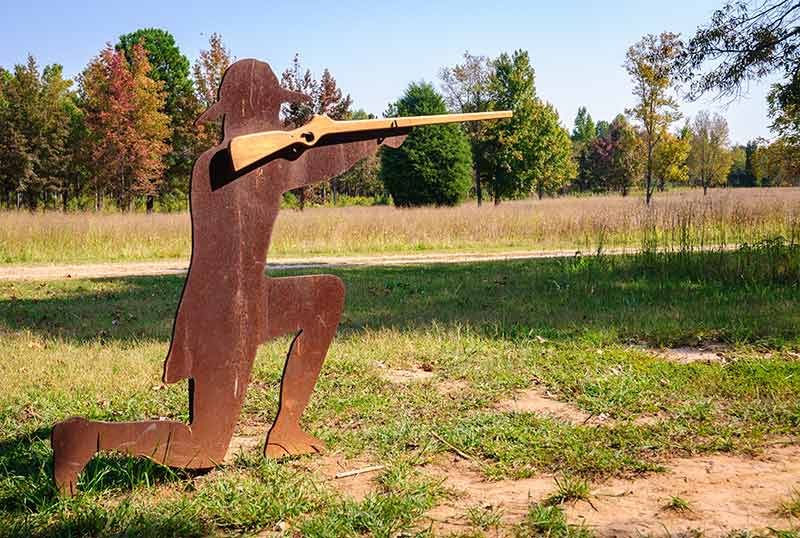
Cowpens National Battlefield takes visitors right back to the late days of the American Revolution when on January 17, 1781, the Southern Campaign won an important battle against the British.
The battle took place on classic South Carolina pastureland, otherwise known as cowpens, and ever since General Daniel Morgan won the battle, the name cowpen has stuck.
Today, 791 acres (320 hectares) have been set aside to honour those who fought in battle and helped pave the way for the defeat of the British forces.
Things To Do In Cowpens National Battlefield
Like Charles Pinckney National Historic Site, many things to do in Cowpens National Battlefied focus on the region’s interesting history.
Start your battlefield tour at the visitor centre, where you can read up on the park, watch an 18-minute film, check out a small museum and bookstore, and chat with rangers and volunteers.
Next, wander the grounds on the 1.2-mile (2-kilometre) Battlefield Trail, which takes you to the Washington Light Infantry Monument and along the historic Green River Road.
There are several picnic tables, so pack some food and enjoy lunch on the battlefield.
How To Get To Cowpens National Battlefield
Located at the very top of South Carolina, the closest airport to Cowpens National Battlefield is the Greenville-Spartanburg International Airport. From here, it’s an easy 45-minute drive east along I-85 N.
Cowpens National Battlefield Visitor Center is at 4001 Chesnee Hwy, Gaffney, South Carolina 29341.
4- Fort Sumter and Fort Moultrie National Historical Park
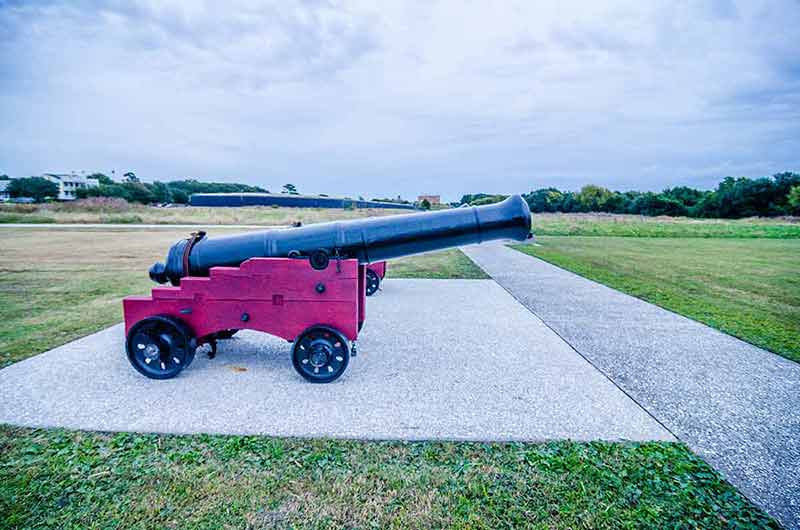
Located on the coast of South Carolina, protecting Charleston from naval invasion, Fort Sumter and Fort Moultrie’s first role was to stop the British invasion during the American Revolution.
It was also here that the Battle of Fort Sumter began the Civil War.
To reach Fort Sumter, you’ll need to board a ferry (private boats are not allowed), and after a thirty-minute journey, you’ll reach the entrance.
As the forts are no longer active, you can roam the grounds, visit museums and learn about their interesting history.
Things To Do At Fort Sumter And Fort Moultrie National Historical Park
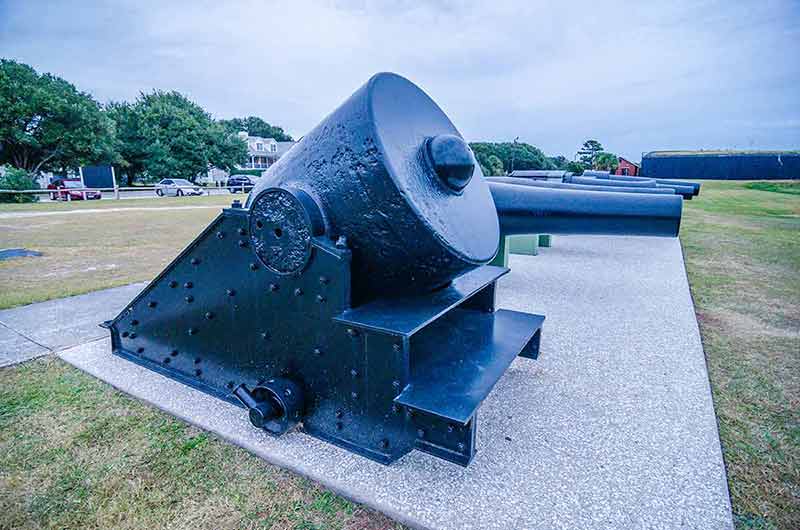
Before hopping on the ferry, spend time at the Liberty Square Visitor Education Center.
Different exhibits portray the disagreements between the North and the South, ultimately leading to the Civil War.
Once you’ve arrived by ferry to Fort Sumter, another museum takes a deeper look into how the fort was used during the war, as both the North and the South claimed the fort as their own.
Across Charleston Harbor at Fort Moultrie, guided tours bring you on a journey through history from the fort’s start in 1776 to its use during World War II.
Fort Sumter and Fort Moultrie are protected historical sites, so hiking and nature trails are limited here.
How To Get To Fort Sumter And Fort Moultrie National Historical Park
To get to Fort Sumter, first head to the Fort Sumter Visitor Education Center located in downtown Charleston. From here, you can board a concession-operated 30-minute ferry to Fort Sumter.
Fort Moultrie is 10 miles (16 kilometres) from downtown Charleston on SC-703E. For either Fort Sumter or Fort Moultrie, fly into Charleston International Airport.
Fort Sumter Visitor Education Center is at 340 Concord Street, Charleston, South Carolina 29401
5- Kings Mountain National Military Park
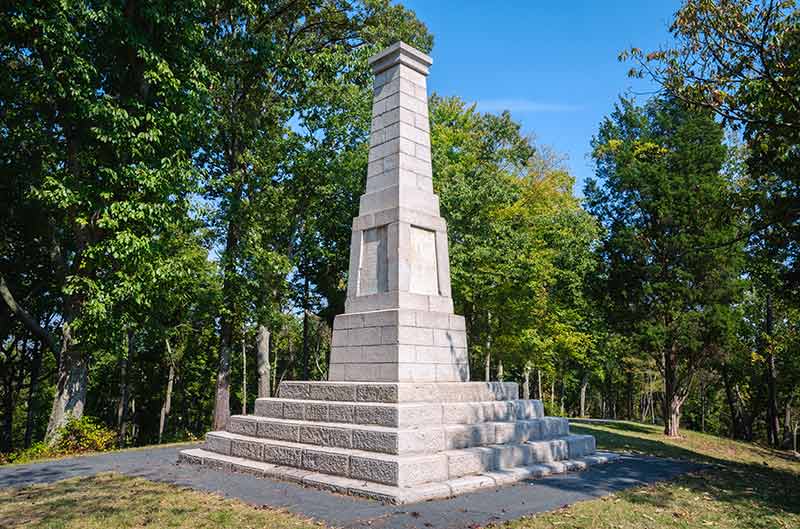
Covering 4,000 acres (1600 hectares), Kings Mountain National Military Park is one of the USA’s largest national military parks and offers visitors both an in-depth look into Revolutionary War history and miles of nature trails to enjoy.
Its famous battle, which took place on October 7, 1780, between all-American troops divided between Patriots and the Loyalists, was a major turning point for America and Thomas Jefferson himself coined the battle “The turn of the tide of success.”
Things To Do At Kings Mountain National Military Park
Whether you’re interested in history or not, you’ll find Kings Mountain National Military Park bursting full of interesting history and plenty of trails to stretch the legs.
Be sure to stop in at the Visitor Center first to check out an informative film and a museum housing weaponry straight from the Revolutionary War.
Next, head out on the 1.5-mile (2.4-kilometre) Battlefield Trail, which showcases exhibits from both the Patriots and Loyalists and the Centennial Monument, U.S. Monument and Ferguson’s Grave.
The Battlefield Trail is also wheelchair accessible and perfect for the entire family.
If you want to get more off-the-beaten-path, test your endurance on the Browns Mountain Trail, which takes you 2.5 miles (4 kilometres) and 751 feet (229 metres) up through a quaint forest to a lovely viewpoint overlooking the hills of South Carolina.
It’s also possible to stay the night in Kings Mountain National Military Park at Garner Creek Campsite.
Obtain your free permit at the visitor centre and then it’s a 3-mile (4.8-kilometre) hike to the campsite.
How To Get To Kings Mountain National Park
You’ll find the impressive Kings Mountain National Park right on the border of North and South Carolina. The closest major airport is the Charlotte Douglas International Airport, located in Charlotte, North Carolina. From the airport, you can expect a 40-minute drive along I-85 S to reach Kings Mountain.
Kings Mountain National Park is located at 2300 Park Road, Blacksburg, South Carolina 29702
6- Ninety Six National Historic Site
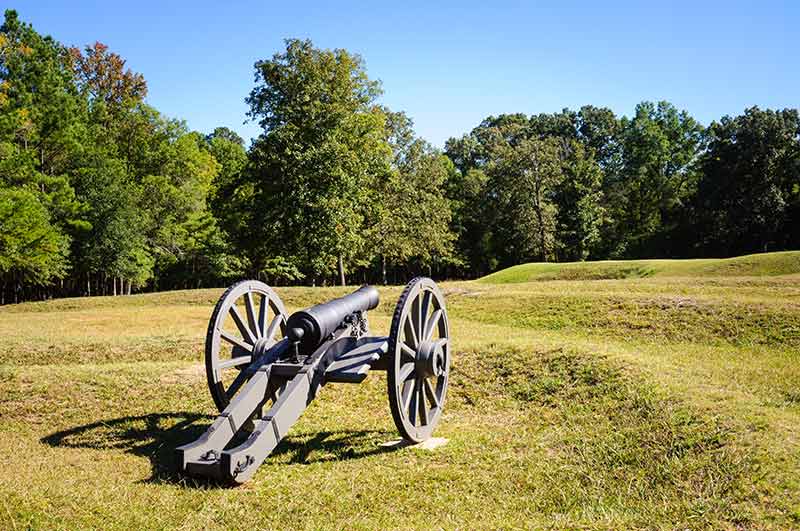
While the verdict is still out as to how Ninety Six got its name, one thing is clear – it played an important role in the American Revolution.
It’s here you can see the original Star Fort, built between 1780 and 1781 by Loyalist soldiers, whose engineer wanted an eight-point star so the army could fire muskets and cannons in all directions.
Of course, the fort is no longer active, but visiting the Ninety Six National Historic Site is well worth your time to learn the 18th-century history of South Carolina.
Things To Do At Ninety Six National Historic Site
To fully understand what you’re about to see, be sure to spend some time at the visitor centre, which has information about the park and the battles that took place here, along with a live-action film, museum and bookstore.
Next, head out on the easy 1-mile (1.6-kilometre) Historic Interpretive Trail, which takes you past the original Star Fort, reconstructed siege works and the old town site of Ninety Six.
If you’re game for a longer hike, check out the Cherokee Path and Gouedy Trail.
How To Get To Ninety Six National Historic Site
The closest airport to Ninety Six National Historic Site is the Greenville-Spartanburg International Airport.
From here, expect a 90-minute drive south along I-385 S. Ninety Six National Historic Site is also a 90-minute drive west from Columbia along I-26W and SC-34W.
Ninety Six National Historic Site is located at 1101 Hwy 248, Ninety Six, South Carolina 29666
7- Reconstruction Era National Historical Park
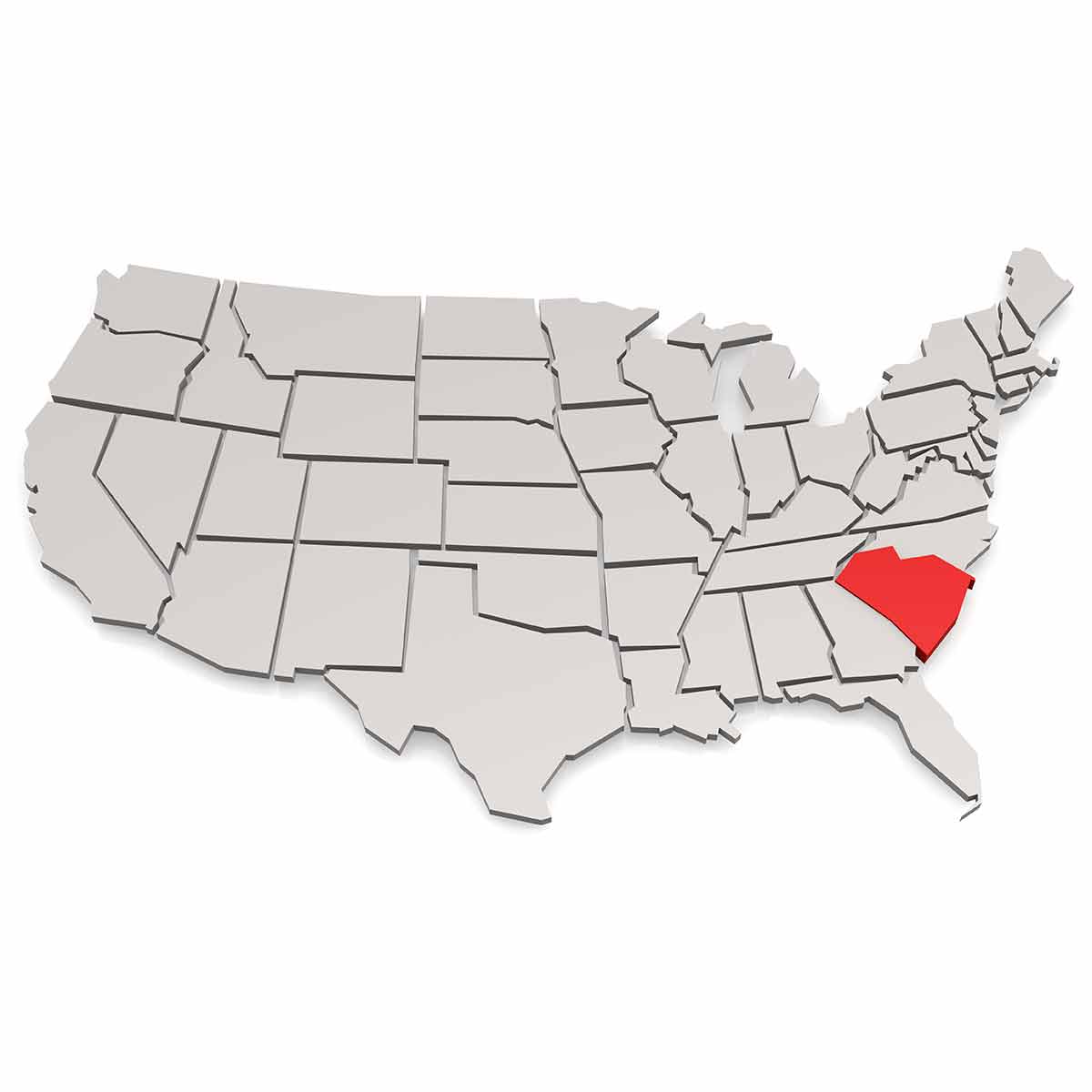
It’s not often National Park service areas come with hefty disputes, but in the case of the Reconstruction Era National Historical Park, this is precisely the truth.
Only established recently in January 2017 by President Barack Obama, the monument represents the trying times the United States found itself in after the Civil War.
For 15 years before it was established, the monument was successfully opposed by a nonprofit organisation, the Sons of Confederate Veterans.
Today, Reconstruction Era National Historical Park is home to four historical sites, including an early school for formerly enslaved people, a brick baptist church, an old firehouse and Camp Saxton.
Things To Do At Reconstruction Era National Historical Park
As the Reconstruction Era National Historical Park’s primary focus is on the months and years after the Civil War ended, it shouldn’t be a surprise that most things to do here involve checking out the many interesting historical sites and learning about life in the 1860s.
If you don’t have time to check out all the different buildings, be sure to spend time at the Penn Center, home to a museum and welcome centre and Camp Saxton, where park rangers lead tours around the site of the Emancipation Proclamation.
How To Get To Reconstruction Era National Historical Park
Located in the charming town of Beaufort, Reconstruction Era National Historical Park is an easy 90-minute drive from Charleston Internation Airport. Or, for an even shorter drive, you can also fly into the Savannah/Hilton Head International Airport and drive northeast for one hour along SC-170 E.
Reconstruction Era National Historical Park is located at 706 Craven Street, Beaufort, South Carolina
8- Overmountain Victory National Historic Trail
Located throughout Virginia, Tennesse, North Carolina and South Carolina, the Overmountain Victory National Historic Trail encompasses a 330-mile (530-kilometre) route used during the Kings Mountain campaign.
While most of this trail follows state highways, there are also 87 miles (140 kilometres) of walkable pathways, including the last leg to Kings Mountain in South Carolina.
If you love exploring national parks, you might like to read:
- Wyoming National Parks Guide
- Nevada National Parks Guide
- Michigan National Parks Guide
- 5 Maine National Parks
- New Hampshire National Parks Guide
- 25 National Parks in Canada
- 17 National Parks in Argentina
- Tasmania National Parks
- 20 National Parks in Mexico
- 18 New Mexico National Parks
- 18 National Parks in Massachusetts
- 17 Colorado National Parks
- 4 Indiana National Parks
- 5 Nebraska National Parks
- 30 Virginia National Parks
- 9 New Jersey National Parks
- 8 National Parks in Arkansas
- 8 Alaska National Parks
- 13 Tennessee National Parks
- 6 National Parks in Louisiana
- 5 Illinois National Parks
- 7 National Parks in Oklahoma
- 7 National Parks in South Dakota
- 12 Alabama National Parks
- 5 North Dakota National Parks
- 8 National Parks in West Virginia
- 20 National Parks in Arizona
- 11 National Parks In Florida
- 8 Hawaii National Parks
- 6 National Parks In Idaho
- Texas National Parks Guide
- 9 California National Parks
- 11 National Parks In Georgia
- 7 National Parks In Missouri
- 5 National Parks in Minnesota
- 7 National Parks In Kentucky
- 8 National Parks In Montana
- 15 National Parks In Washington State
- 8 South Carolina National Parks
- 12 North Carolina National Parks
- 4 Wisconsin National Parks
- 20 National Parks In India
- 11 Oregon National Parks
- 5 Connecticut National Parks
- 27 National Parks In New York State
- 4 Iowa National Parks
- Yosemite National Park
- Zion National Park
- 21 National Parks in Pennsylvania
- 9 National Parks in Mississippi
- 5 National Parks in Rhode Island
- 9 National Parks in Taiwan
- 20 East Coast National Parks
- Guide To Winter in Yellowstone National Park
Plan Your Trip

Rent A Car – Find the best car rental rates at Discover Cars. They compare car hire companies to provide you with the best deal right now.

Find A Hotel – If you’re curious about this article and are looking for somewhere to stay, take a look at these amazing hotels.

